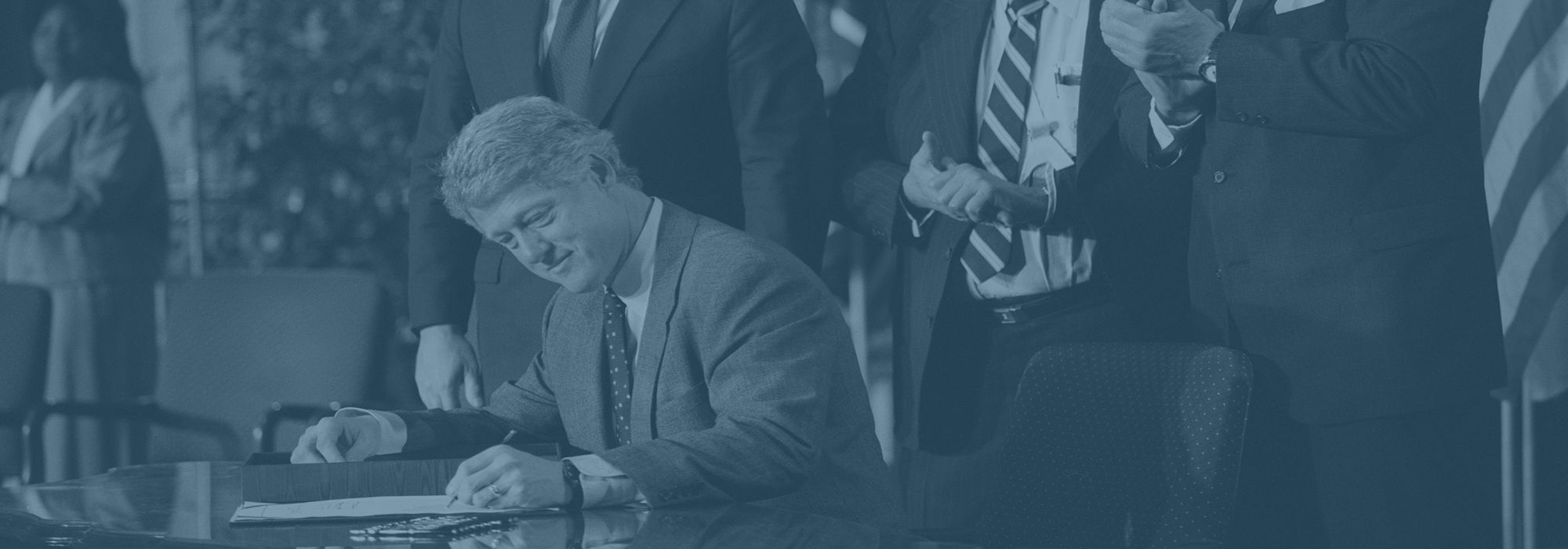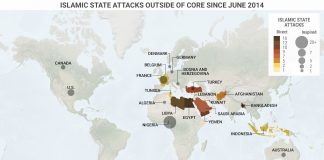Jacob L. Shapiro
Republican presidential candidate Donald Trump said in March that he would “rip up” NAFTA, although he has since softened his stance. Hillary Clinton, his Democratic challenger, said in 2008 that she would threaten to “opt out of NAFTA unless we renegotiate it.” President Barack Obama said in a Democratic debate in 2007 that if elected, he would “immediately call the president of Mexico and the [prime minister] of Canada, to try and amend NAFTA.” In 1993, then-Vice President Al Gore said in a debate on NAFTA with Ross Perot, “If [NAFTA] doesn’t work, you know, we give six months’ notice and we’re out of it.”
NAFTA is a controversial issue. It appears in the news at every election cycle. The statements quoted above – from U.S. politicians across the political spectrum – all make an incredible assumption. Each assumes that a U.S. president has the power to withdraw the U.S. from NAFTA by executive action, without consulting Congress. Trump and Gore obviously think so. Obama and Clinton implicitly think so (a threat to renegotiate has no teeth if a president cannot back up the threat). We write often of the inherent constraints on the power of the leaders of nations, especially the American president, but this is one area where the executive branch currently possesses an uncharacteristic advantage.
Despite the complexity of the agreement, the mechanics of withdrawing from NAFTA are simple. Article 2205 of the agreement says: “A Party may withdraw from this Agreement six months after it provides written notice of withdrawal to the other Parties. If a Party withdraws, the Agreement shall remain in force for the remaining Parties.” The withdrawal process from NAFTA is clear and uncomplicated. The deeper question is: who in the United States gets to make that decision? Can the president, without consulting Congress, withdraw the U.S. from NAFTA simply by dispatching a letter to Mexico and Canada and waiting six months?
The U.S. Constitution is silent on this question. The Constitution covers treaties – not agreements – and NAFTA is not technically a treaty. It is the North American Free Trade Agreement. Within the framework of U.S. law, NAFTA is what is called a congressional-executive agreement (CEA). One of the major differences between treaties and CEAs in the United States is how they are made law. Article 2, Section 2 of the Constitution says the president “shall have power, by and with the advice and consent of the Senate, to make treaties, provided two thirds of the Senators present concur.” CEAs, on the other hand, are not mentioned and are approved by a simple majority in the House of Representatives and the Senate.
Even if NAFTA were a treaty, the Constitution would not make the situation much clearer. This is because the Constitution says nothing about who has the power to terminate a treaty. The question also has not been answered by American jurisprudence. Two cases involving U.S. presidents who terminated a treaty by executive decision have made it to court. To give a framework for how to think about the question of NAFTA and whether a CEA can be terminated by a president, it is useful to begin with a basic understanding of these cases.
The first case involved President Jimmy Carter’s executive termination of the Sino-American Mutual Defense Treaty with Taiwan in 1979. A group of senators, led by Barry Goldwater, sued, and the case went all the way to the Supreme Court. Six justices ruled that the case should be dismissed, but could not agree on the reasoning. Four justices agreed with Justice William Rehnquist that it was a political question not fit for the courts to decide. The legal issue at hand – whether Carter’s actions were Constitutionally valid – was not ruled on. The second case involved President George W. Bush’s withdrawal in 2001 from the Anti-Ballistic Missile Treaty, which was originally signed with the Soviet Union in 1972. Congress again sued, but the case didn’t make it out of a D.C. District Court. It was dismissed as a “nonjusticiable political question.”
Consequently, U.S. courts have given no clear guidance on whether a president must consult the Senate in order to terminate a treaty. Secondary sources are split on the matter, but many well-respected juristic sources consider treaty termination to be the prerogative of the president. The Restatement of the Foreign Relations Law, prepared by the American Law Institute, says that a president has the power “to suspend or terminate an agreement in accordance with its terms.” The late renowned law scholar Louis Henkin argued a similar position. The Senate Committee on Foreign Relations (SCFR) has argued that the process of terminating a treaty should be subject to the same rules as those governing the adoption of a treaty. But even the SCFR admitted in a 2001 report that there was no settled rule or procedure and that as a practical matter, this power currently rests with the president.
The question becomes even more hazy in the case of congressional-executive agreements like NAFTA. A CEA requires the approval of a simple majority in both Houses of Congress. The passage of NAFTA involved a 169-page piece of legislation, H.R. 3450. The first purpose of H.R. 3450 was to authorize President Bill Clinton to enter into an agreement with Mexico and Canada on Jan. 1, 1994. The second purpose of H.R. 3450 was to pass the content of NAFTA into U.S. law. But H.R. 3450 does not require that the president get authorization from Congress should the president decide to withdraw the U.S. from NAFTA.
Even if a president could unilaterally terminate a CEA, which is at least a definite possibility, some have argued that the statutes Congress legislated into law in H.R. 3450 would become zombie statutes. By this logic, the statutes would remain in place until repealed by Congress, regardless of the president’s withdrawal of the U.S. from the formal agreement. The counterargument is that H.R. 3450 was an implementation act and without the formal agreement the statutes covered by this law would be defunct. Legal precedence here is scant at best. H.R. 3450 does not address this particular issue. The SCFR offered little additional clarity in its conclusion that “the president’s authority to terminate executive agreements…has not been seriously questioned in the past.”
A U.S. withdrawal from NAFTA would have significant political consequences, but doubly so if Congress and the president were at odds. If a U.S. president were to send a formal note of withdrawal from NAFTA under the current U.S. legal structure, Canada and Mexico would be under no obligation to continue giving American products and companies any preferential treatment even if Congress put up a fight. If the U.S. decided to withdraw from NAFTA for the sake of its national interest, that would no doubt be disappointing to its neighbors, but it would be understandable. However, if the president wanted to withdraw and Congress fought him to remain, it would create the appearance that the U.S. was incapable of pursuing coherent political objectives. American prestige would suffer, and Congress would be under immense political pressure to fall in line.
This issue is not just specific to NAFTA. CEAs have become the predominant way the U.S. conducts its foreign policy since World War II. The Congressional Research Service said in 2015 that the U.S. had entered into 18,500 executive agreements in the country’s history, and more than 17,000 of them were entered into after 1939. In contrast, the U.S. has agreed to only 1,100 treaties. NAFTA is simply one of the most well-known CEAs – the World Trade Organization is another. The broader issue over how a CEA can be terminated has major implications for U.S. foreign policy and the power of the executive office.
So can a U.S. president terminate NAFTA? A definitive answer is not possible. There are simply too many variables and too many unknowns. More remarkable, however, is that the answer is not a simple “no” and that there are plenty of good reasons to think that such power really does rest with the president. As the presidential election hits the home stretch, and as polls continue to show that Americans have increasingly negative views of free trade in general and NAFTA in particular, people should not quickly dismiss any presidential candidate that threatens this course of action. It could turn out not to be a bluff.









